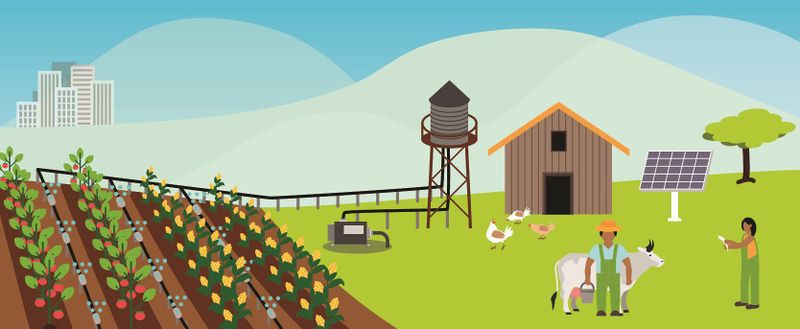Knowledge fuels change - Support energypedia!
For over 10 years, energypedia has been connecting energy experts around the world — helping them share knowledge, learn from each other, and accelerate the global energy transition.
Today, we ask for your support to keep this platform free and accessible to all.
Even a small contribution makes a big difference! If just 10–20% of our 60,000+ monthly visitors donated the equivalent of a cup of coffee — €5 — Energypedia would be fully funded for a whole year.
Is the knowledge you’ve gained through Energypedia this year worth €5 or more?
Your donation keeps the platform running, helps us create new knowledge products, and contributes directly to achieving SDG 7.
Thank you for your support, your donation, big or small, truly matters!
Difference between revisions of "Portal:Water and Energy for Food"
***** (***** | *****) m (Small Changes) |
***** (***** | *****) |
||
| (One intermediate revision by the same user not shown) | |||
| Line 22: | Line 22: | ||
| − | '''Water and Energy for Food''' provides financial support, technical assistance, and investment facilitation to water-energy-food innovations. This portal provides information and tools that targets the integration of water, food, and energy to further agricultural productivity and efficiency. [[Water_and_Energy_for_Food|Read more]]<!--<svgmap width="100%" color="#79d248" mark="ng" mark-color="#ffc714" flag="true" flag-size=""></svgmap>--> | + | '''Water and Energy for Food''' is a joint international initiative that provides financial support, technical assistance, and investment facilitation to water-energy-food innovations. This portal provides information and tools that targets the integration of water, food, and energy to further agricultural productivity and efficiency. [[Water_and_Energy_for_Food|Read more]]<!--<svgmap width="100%" color="#79d248" mark="ng" mark-color="#ffc714" flag="true" flag-size=""></svgmap>--> |
</div> | </div> | ||
</div> | </div> | ||
Latest revision as of 16:25, 20 November 2024

 Sustainable Energy for Food
Sustainable Energy for Food
Agriculture is both one of the main energy consuming sectors and one of the most affected sectors by the effects of climate change. Understanding the nexus between energy and food is essential to develop climate-smart solutions in the agricultural sector.
 Water Use in Agriculture
Water Use in Agriculture
Around 70 percent of global freshwater withdrawals go into agriculture. Sustainable water management is pivotal in order to increase water use efficiency and ensure food and nutrition security.
 Application in Food and Agriculture
Application in Food and Agriculture
Sustainable energy can be applied in a large variety of agricultural activities, ensuring electricity supply in remote areas while increasing farmers’ incomes by saving costs on energy provision from traditional sources.
 Energy Source for Food Production
Energy Source for Food Production
Depending on the geographical location, some energy sources are more suitable for agricultural production and processing steps than others. Adapting to local conditions is essential to improve energy efficiency.
 Value Chain
Value Chain
The implementation of sustainable energy can be found among all steps of different value chains. Depending on production requirements and local conditions, technical innovations can improve farmers’ livelihoods considerably.
 Energy Efficiency
Energy Efficiency
The world’s first fuel is energy efficiency, key to protect natural resources and the climate. Identifying and solving efficiency gaps is crucial for sustainable development.
 Policies and Regulations
Policies and Regulations
The adoption of clean energy solutions can improve considerably when governmental action and regulations provide clear incentives and complement market development.
 Financing and Business Models
Financing and Business Models
As financing is usually the main barrier to gain access to innovative sustainable technologies, both appropriate financial instruments and thoughtful business models are necessary to promote and finance sustainable innovations.
 Cross-cutting Issues
Cross-cutting Issues
The linkages between water, energy and agriculture impact a multitude of cross-cutting issues, such as gender, health and land rights.
 Downloads and Links
Downloads and Links
All links for reports, case studies, innovations, tools and useful training material can be found here.
Further Information
External Websites
Saving water and energy in agriculture and food production - giz.de Home | Nexus - The Water, Energy & Food Security Resource Platform Digital Exhibition | WE4F innovators in the East African Region
SPIS Toolbox
Toolbox on Solar Powered Irrigation Systems (SPIS)
Latest Publications






















